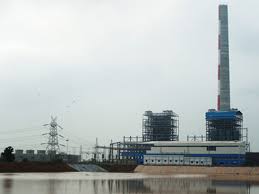The Indian government has released the Draft Electricity (Amendment) Bill, 2025 for public consultation, proposing sweeping reforms aimed at transforming the country’s power sector. The draft law seeks to introduce competition in electricity distribution, phase out cross-subsidies, and enhance regulatory accountability to improve efficiency and financial sustainability.
A senior government official involved in drafting the Bill said the reform could mark the “third generation of power sector reforms” in India — following the unbundling of state utilities in the 1990s and the landmark Electricity Act, 2003. “This could shift electricity from being a public utility to a consumer-driven service — a step vital for India’s goal of becoming a developed nation by 2047,” the official said on condition of anonymity.
Once the public consultation phase is complete, the Bill will be sent to the Union Cabinet for approval and subsequently introduced in Parliament. The government had earlier introduced a similar Electricity (Amendment) Bill, 2022, which was referred to the Parliamentary Standing Committee on Energy.
Opening Power Distribution to Competition
The Bill’s most significant reform is the proposal to end the monopoly of state-run discoms by allowing multiple distribution licensees to operate in the same area using shared infrastructure. This would effectively create a competitive retail electricity market, enabling consumers to choose their supplier based on service quality and price — similar to how telecom operators compete for users.
If implemented, this would mark a structural shift in India’s power sector, transforming discoms from state-controlled monopolies into customer-centric service providers. However, some states are likely to oppose the move, citing concerns over losing control of their power sectors.
Addressing these concerns, the Ministry of Power clarified on October 30 that government-owned discoms will continue to operate alongside private players “in a regulated, level-playing environment,” ensuring fair competition that could reduce costs and improve service standards.
Phasing Out Cross-Subsidies
The Bill mandates the gradual elimination of cross-subsidies within five years, particularly for industrial and transport consumers such as railways and metro systems. Instead of charging higher tariffs to industries to subsidize household and agricultural users, states will be required to provide direct subsidies to target groups through transparent budgetary provisions.
“Removing hidden cross-subsidies will improve industrial competitiveness and job creation while protecting vulnerable consumers such as farmers through direct support,” the Power Ministry said.
Strengthening Regulators and Accountability
To ensure timely tariff revisions, the Bill directs State Electricity Regulatory Commissions (SERCs) to adhere to strict timelines for annual tariff determinations. If utilities fail to file tariff petitions on time, regulators will be empowered to determine tariffs suo motu, thereby reducing delays.
It also proposes expanding the Appellate Tribunal for Electricity (APTEL) from five to seven members to clear pending cases faster.
A new Electricity Council, chaired by the Union Power Minister, will be established to enhance coordination between the Centre and states in implementing sectoral reforms.
Boosting Non-Fossil Energy and Power Markets
For the first time, the draft Bill formally recognizes energy storage systems as a critical part of the electricity value chain — paving the way for their regulation, integration, and market participation.
It also directs state regulators to promote consumption from non-fossil energy sources, extending beyond conventional renewables. Additionally, the Bill encourages the development of power market mechanisms — including contracts for difference and derivative instruments — to enhance market liquidity and transparent price discovery.
“The Electricity (Amendment) Bill, 2025 lays the groundwork for a future-ready power sector aligned with the vision of Viksit Bharat @2047. It ensures that subsidies for farmers and other eligible consumers remain protected, with states continuing to provide them under Section 65 of the Act,” the Ministry of Power stated.

